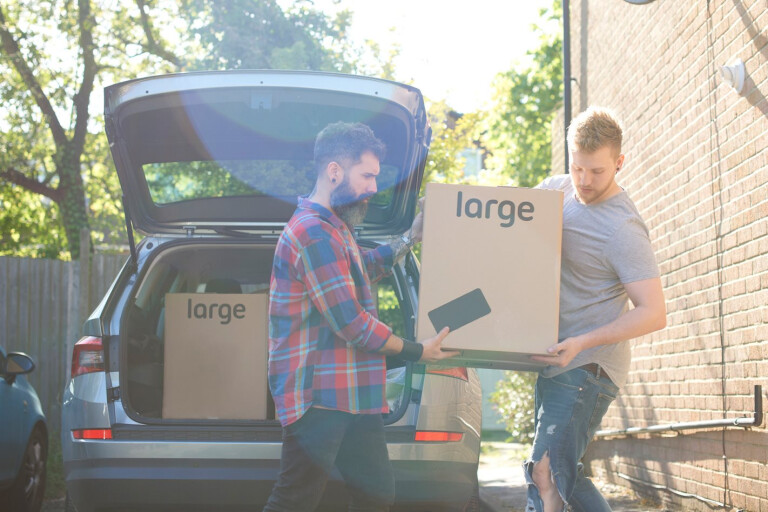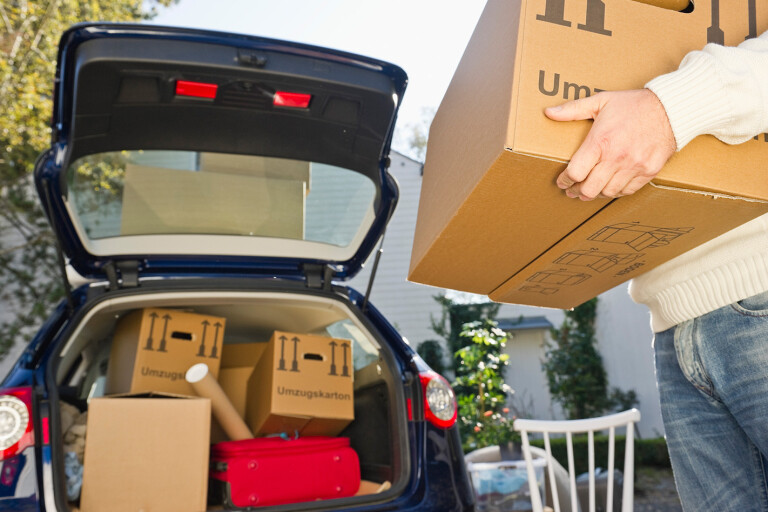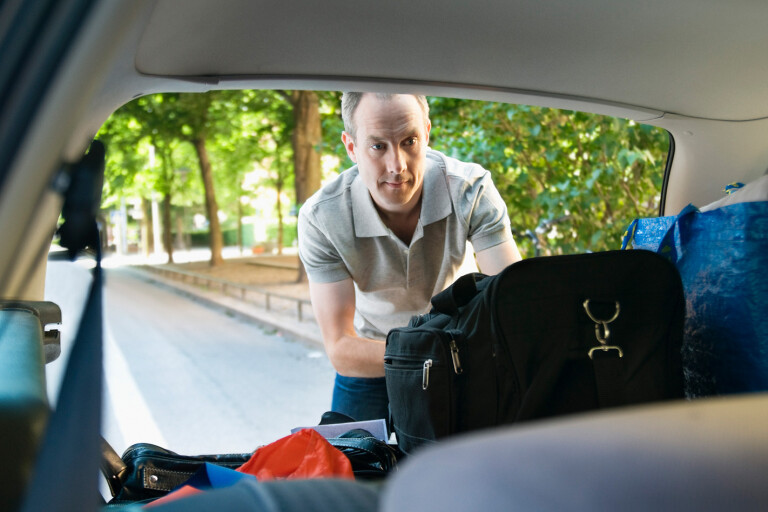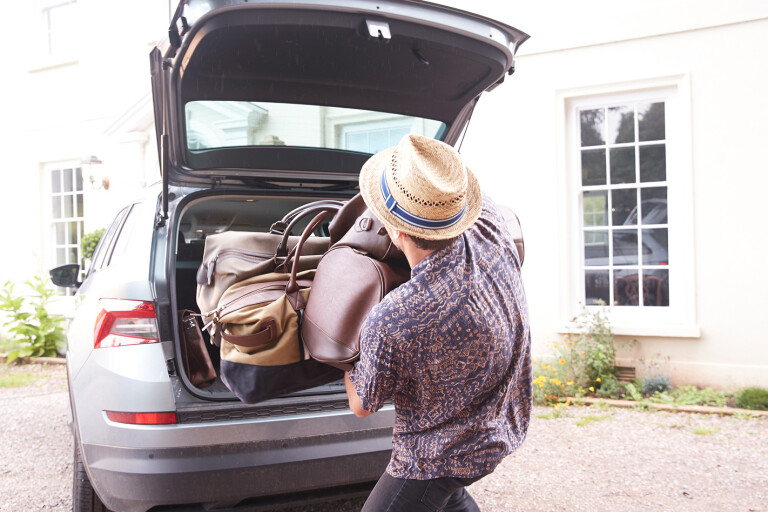
It’s said that moving house is one of life’s most stressful tasks so it makes sense to minimise the pressure and pain of carting all your worldly possessions to a new home wherever possible.
Handing over the job of packing boxes, transporting with a truck and unloading at the new house to a removals firm is often a necessity if you are vacating a large house, but many movers prefer to reduce the cost and take on the job themselves.
Along with a tape gun, hand trolley and strong neighbour, the vehicle you use can be the difference between doing the job in a day and a long, backbreaking night.

Here are our top tips for finding the right vehicle for the job.
You don't need us to tell you that the bigger is often better when choosing a vehicle to move house with, but there's more to it than simple cubic metres. The shape of the load space is also critical for maximising the amount of stuff you can carry, but you’ll be hard pressed to find a car or SUV with a geometrically-ideal right-angled interior. Many modern vehicles offer folding second-row seats, but the type that folds properly flat (and flush!) with the boot floor is more versatile, allowing you to fit in more boxes and making the job of getting them in and out easier.
Even better are those vehicles that allow you to completely remove seating when not in use such as the Skoda Karoq, and it pays to look for other innovative cabin design features such as Honda's 'magic seats' that cleverly open up the full floor-to-ceiling height of the cabin. Whoever thought you could get a washing machine or a giant TV in a Jazz? Another good example is Citroen's C3 which has a flat-folding front passenger seat which allows the loading of very long items all the way from the boot opening to the dashboard.
Increasingly, SUVs are adopting more coupe-like rooflines and elegant profiles but this can be a disadvantage when using the full load capacity. Look for vehicles with regular-shaped cabins and tall ceilings that will allow you to load items right up to the headliner.
Don't forget the roof! With the correct roof storage options, the top of a vehicle can accommodate some very bulky items when loaded safely, but some manufacturers have thought ahead. Subaru's Outback, for example has clever roof rails included as standard, which feature folding bars that provide the horizontal beams as well. When not required they simply hide away into the permanently-fitted rails.

Utes have obvious cargo advantages but not all are created equal. Dual-cabs will offer plenty of space for bulky items and the tough suspension for heavy loads too, but the four-person cabin robs tray length and you might be better off looking for the more tradie-focused single cab. And while the increasingly popular 4x4 ute may seem useful, remember that jacked-up suspension means you'll be lifting your boxes up and down from a height. A car-based ute such as the previous-generation Holden Commodore or now discontinued Ford Falcon might suit you better.
If you can't fit everything in or on the vehicle then you might want to consider towing your gear behind it instead. A rented or borrowed trailer will provide plenty of space and can be the difference between multiple trips and getting it done in one. Obviously you'll need a properly installed tow bar and always check the trailer’s brake lights and indicators before hitting the road, but some vehicles are far better suited to heavy hauling work.
Generally speaking, turbo diesel engines have lots of torque which is ideal for towing duties, while large SUVs can offer a high gross vehicle mass - the maximum total amount the vehicle, its contents and towed load is permitted to weigh. Many dual-cab utes offer a GVM of about 3000kg but if you need to pull a little more than that, the Ram 2500 has a mighty 6.6-litre diesel and is rated at just under 8000kg. If that's not enough then you might need to call a removalist or hire a proper truck.
For outright volume and purpose-built suitability, it’s hard to better the ultimate space champion - the van. With maximum cargo capacity and minimum luxury features, vans are often the perfect workhorse for shifting boxes but they have a few disadvantages.
Very few models offer the assistance features you might be used to in a modern car such as parking and manoeuvring aids (something you might miss even more in a large vehicle with minimal rearward vision), and it’s rare to find driving assistance technology including forward collision mitigation. Don’t forget safety just because its removals day.

Finding the most suitable vehicle to move house with is about more than just space and, as with many big projects, preparation is everything.
When you have the right car for the job here are some top tips to make the job easier:
Only pack what you need
Moving house is a great time to get rid of old or unloved possessions and there’s no point filling car space with something you don’t want or need in the new house. Use the move as an opportunity to have a clear out and start fresh. Then there will be less to haul.
Get clever with space
Boxes are convenient but they aren’t flexible and won’t fill every corner in the car. Once the boxes are in, use more flexible containers and packaging to use every remaining inch of precious cargo space. Plastic bags can be stuffed into tight spots and, when filled with soft items such as clothes, can double as protective padding for other fragile items.
Balance the load
You might underestimate just how heavy a fully loaded car can be so make sure your vehicle is as stable as possible by careful packing. Heavier boxes and items should be loaded first and lowest in the vehicle as well as closest to the centre of the car to centralise the extra weight.
Use every storage spot
Once the boot and main storage areas are full, don’t forget the other smaller spaces that can still swallow a significant amount of stuff. Centre console storage bins, under-seat space, door pockets and even the glove box offer stowage allowing you to maximise the vehicle’s capacity. Just don’t put anything in the driver’s footwell… for obvious reasons.
Smaller boxes are better
They might not seem like the most efficient packing solution, but smaller boxes make more sense than large cartons in many circumstances. Not only are they easier and lighter to manhandle, but multiple small boxes will fill an irregular load space more effectively than one large box.
Leave hazardous items to the experts
Potentially dangerous items should not be packed in the car. Barbecue gas bottles, flammable liquids (or any equipment that contains flammable liquid), very heavy items that can be hazardous in a collision and dangerous chemicals should be dealt with considerately and special transport conditions should be arranged where necessary.
With a little planning and the right vehicle, the stress of moving house can be minimised, and you’ll be settling into your new home sooner than you think.


COMMENTS